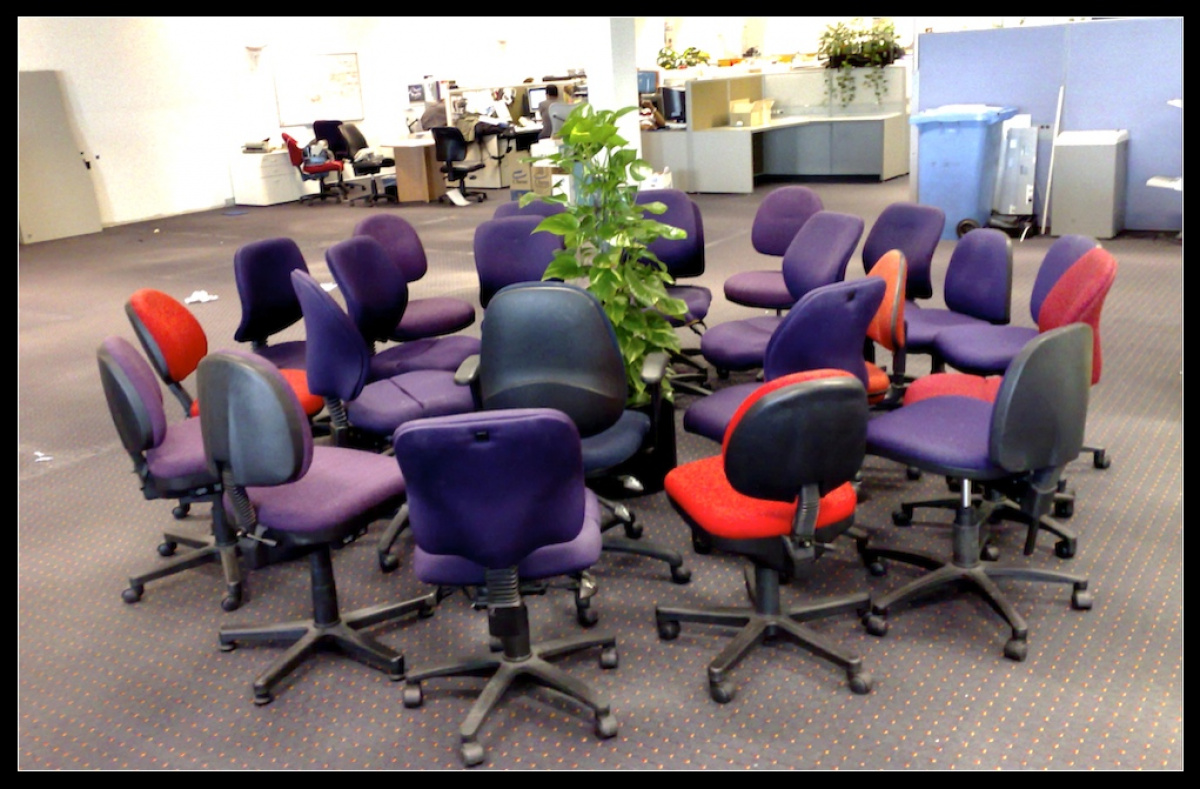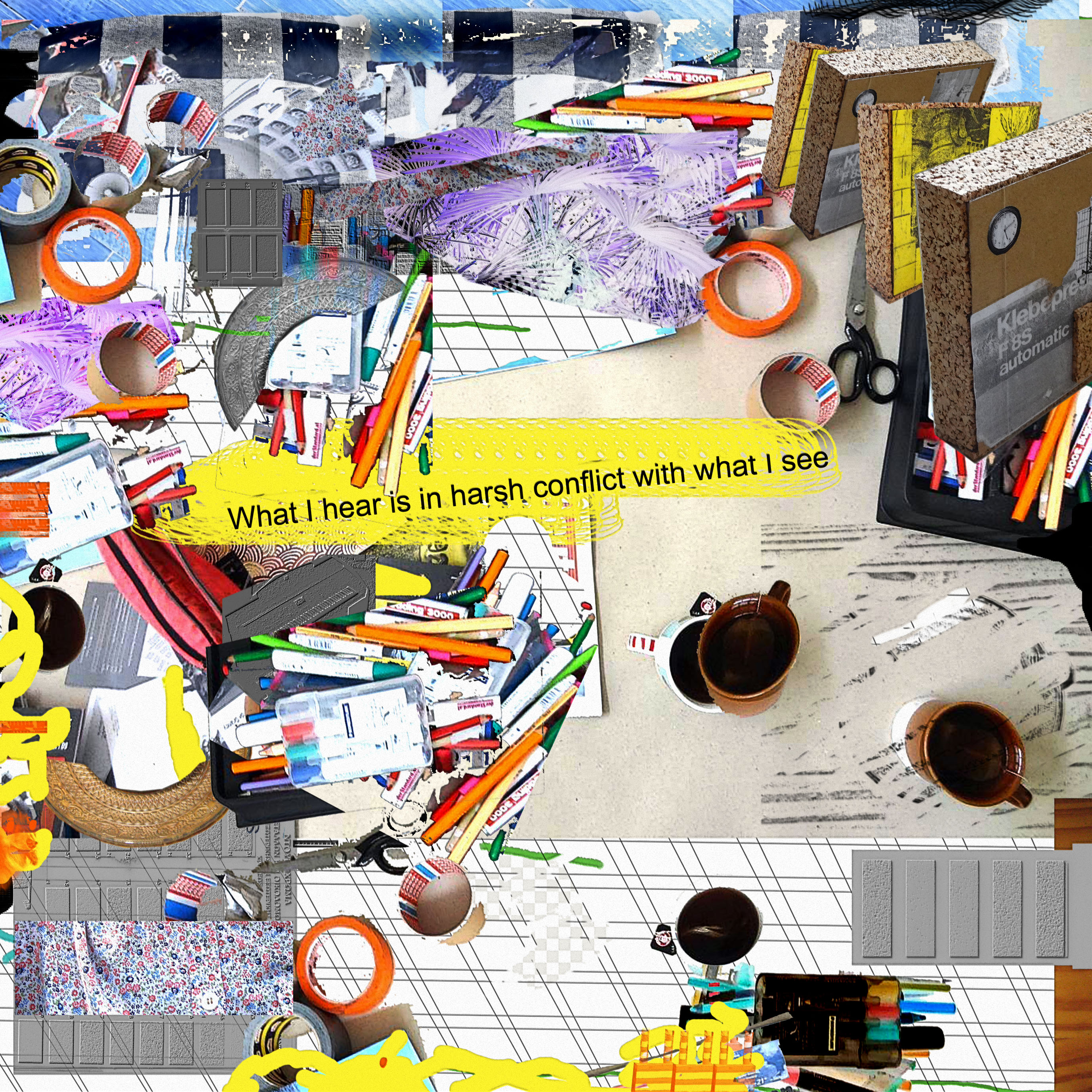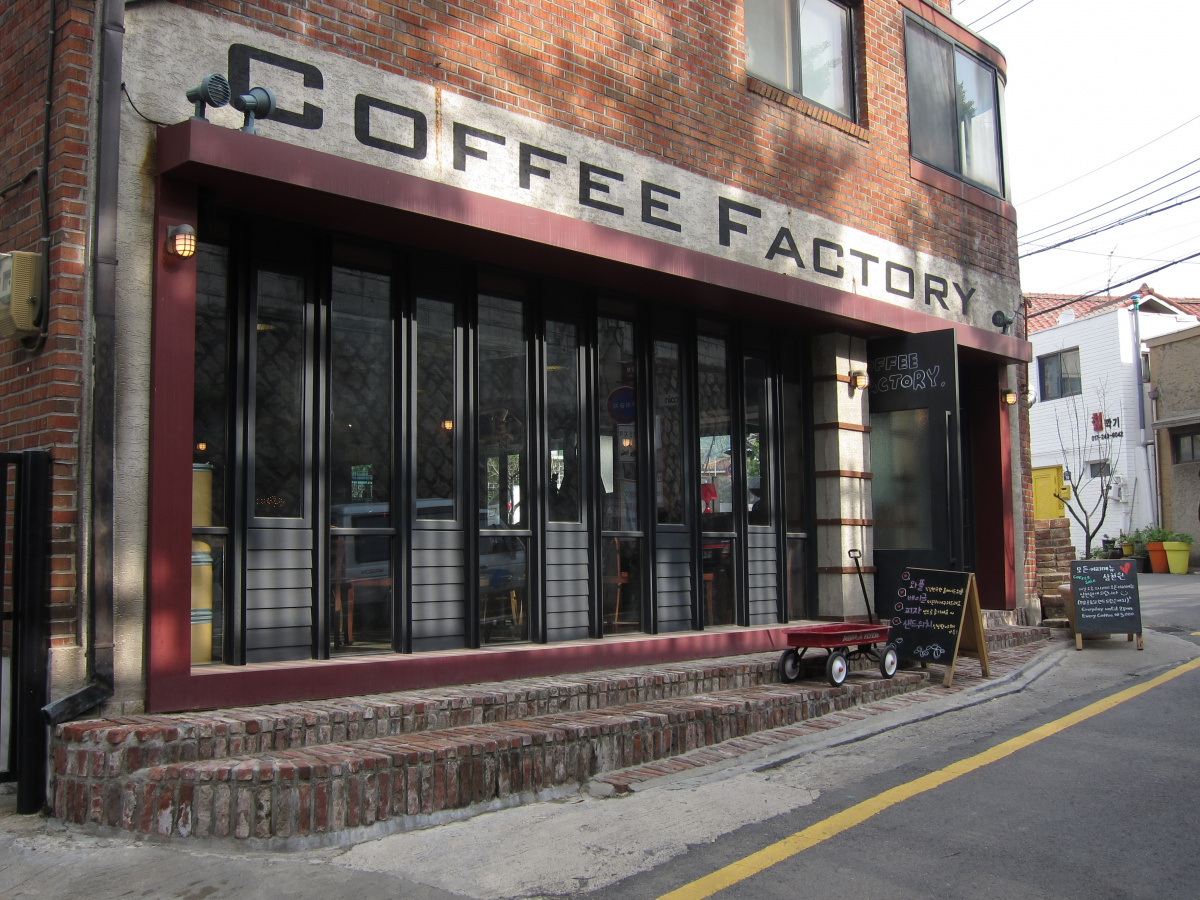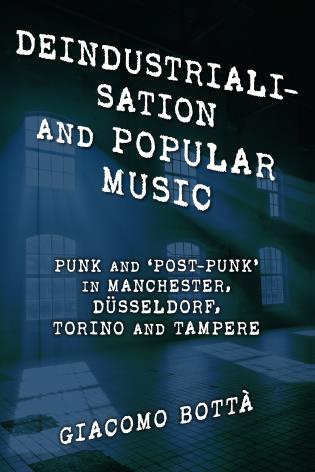
Sound Politics of Video Calls
The pandemic-driven changes have produced new sensory dissonances: While some urban spaces became eerily quiet, ubiquitous video calls turn the domestic into a public space flooded by multiple voices and sounds. What do these sonic worlds tell us about the social?
I hear the sound of a voice. I also hear the background noise of the room in which this voice is speaking. I hear some reverberations, maybe an overload of bass or high frequencies, they tune the voice in a strange way. I hear a stuffed office space, or the spacious kitchen, with all the pans, polished surfaces, and a tiled floor. All of this is immediately present, sonically. It is more present in sound than it is on screen. All the material details seem to suddenly become very present in a video call: the so-called impulse response in the acoustic space where a person is speaking is thoroughly audible.
I can also hear the quality of the microphone the person is using. Is it a cheap, customized membrane, neatly fit into a discount tablet casing, or is it a headset, maybe placed too close to a person’s mouth or throat (it slipped down)? Or a special microphone that records speech with a lot of detail, agreeable to listen to and mellowed down for a comforting appearance?
The Smell of the Dishes
The dissonance between this groomed and refined vocal performance and an echoing kitchen space might become almost unbearable. I can smell the dishes, brewed coffee, wet sponges, spices, fruits, vegetables. What I sense by hearing is in harsh conflict with what I see – and it results in me imagining all sensory aspects of this recording situation in detail. Against all these odds, I try to focus on the sound: on the issues this person wishes to articulate. But the unbearable dissonance pushes itself into the foreground, again and again.
It is a sensory dissonance most of us learned to live with in recent months. We might need to cope with it in the months or years to come. These months of contact restrictions generated new sensory regimes, new sensologies (Mario Perniola). Many impromptu research efforts focused on the seemingly growing quietness in urban areas as well as on other resulting sonic transformations in everyday life. Finnish researcher Meri Kytö collected many of these projects under the title «Pandemic+sound/music+environment».
The Hidden Sounds of the Real
While one might have indeed noticed a decrease of the activities related to commuting and working in the public sphere, one also might have noticed an increase and intensification of activities related to communicating and working in the personal space of a home. These contrasting developments are – at least partially – driven by social class, gender, and race. If you are in the situation to live a wealthy life, if you identify as a cis-het male, and your skin color is being identified as white, then it is quite probable that you might have been able to enjoy a certain decrease of activities. If you are more precarious, queer, BlPoC, or even if you simply identify as a woman, you might have suffered from an increase in all sorts of activities, with more pressure than ever before.
This divergence in everyday activity dynamics finds its symptoms in the divergence of sounding environments in video calls. Here, it is the «sonic dominance»1 (Henriques) that pushes into the foreground what is often repressed and forced to be hiding in the background. The material impact, the viscerality of the sonic flux (Cox) all around gives an idea of the lives these sonic personae lead: because I encounter them now, through pixels and pressure waves. The sonic presents itself to us as a condensed representation of the social.
- 1. The term is used by Julian Henriques to describe a total immersion of its participants in the vibration of frequencies at sound system events.
List of References
«Sonic Vignettes» is a new Norient Special discussing sound: one fragment, one experience, recording, one viral video, stream, one monograph or encounter at a time – in all its depth, its historical and affective ramifications, with the finest expertise in Sound Studies. Initiated by Holger Schulze, Rolf Großmann, Carla J. Maier, and Malte Pelleter, published as a monthly column.
Biography
Published on November 02, 2020
Last updated on November 25, 2020
Topic
How do acoustic environments affect human life? In which way can a city entail sounds of repression?
Special
Snap


